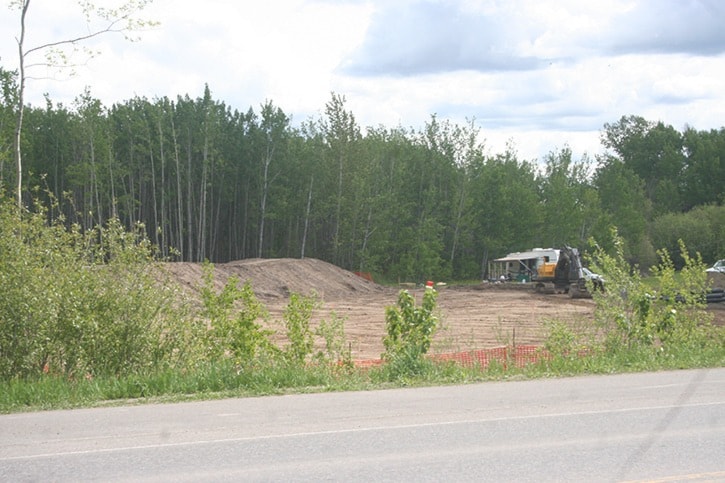The Nechako white sturgeon is already endangered and current efforts to save them may be futile, according to a letter written by a committee dedicated to preserving the fish.
The letter implies that the sturgeon can no longer reproduce successfully and right now extinction is inevitable unless something is done.
Sent to Lynda Currie, chair of the Nechako Environmental Enhancement Fund Management Committee, the letter suggests that money spent on hatchery releases of white sturgeon will be ineffective. The paper was written by the executive of the former Nechako Watershed Council.
Mayor Gerry Thiessen said that he agreed with a lot of the ideas presented in the paper, but added that the paper is still a personal opinion of three people.
"Theres something we can learn from this, my hope is that the sturgeon recovery centre will be a place that we will learn from," said Thiessen. "We will say okay, this is what happens to a river when we make a decision as dramatic as the Kenney dam was on the Nechako river.
"As a person who was born, raised, and lived on the Nechako river for most of my life... we need to learn from what we do when we make decisions that gives industry access to resources as important to us as the Nechako river."
The Nechako White Sturgeon Conservation Hatchery presents the solution of introducing juvenile sturgeon into the river to combat the losses. However, this solution is flawed, states the paper.
"Aside from the trite maxim that hatchery-reared fish are a weak substitute for naturally-reared populations, releasing juvenile sturgeon into an environment in which the species cannot survive demonstrates very serious planning flaws. While the hatchery program is a valid and necessary interim measure, it does nothing whatever to address other issues related to the ecological health of the river."
The paper's main argument is that because the environment is so hostile for the sturgeon, the existing measures to help the fish are futile. Solutions must start with restoring the fish's habitat and creating more natural seasonal flows in the river.
But the Nechako Watershed Council's argument isn't unique in suggesting the hatchery will not be enough to save the Nechako white sturgeon. According to Don Peterson, president of the Freshwater Fisheries Society of BC, the hatchery has long been known as only a short-term measure to protect against the extinction of the species.
"For them to come out and say that this hatchery isn't going to save the sturgeon because its a habitat issue, thats not news, thats been known for a long time," said Peterson.
"The recovery plan was written 10 years ago. The fact of the matter is, without the hatchery to capture the genetic material present in these last mature sturgeon that exist in the river, 40 years of age or older, there won't be any sturgeon to live in that habitat in the future. It's buying time and thats the strategy with the hatchery."
The hatchery is expected to be up and running by next spring and will be functioning for about 30 years while work continues on resolving the habitat issues.
Water flows in the Nechako river are governed by the 1987 and 1997 settlement agreements with Rio Tinto Alcan. In the paper: "The 1987 Settlement Agreement established flow levels to protect Chinook salmon and to control summer water temperatures for migrating sockeye."
The paper further suggests that the $100 million Nechako Environmental Enhancement Fund (NEEF) is an ineffective investment, like treating only the symptoms of a disease rather than the disease itself. The NEEF funding is to be used for working on the Nechako Watershed area, including a Cold Water Release Facility at Kenney Dam and a small portion of that funding to go towards a sturgeon hatchery.
The only way to really save the habitat is to shut down the dam, and thereby Kitimat, which isn't going to happen in the near future.
"Even if that were to happen, it would likely take decades for the river to repair itself, so you know that's not happening," said Peterson.
But Peterson stated, the water release facility will provide benefits to the Nechako, it will definitely be an improvement. Just maybe not enough of one.
"I think it would be an incredible shame to lose a species thats been here for millions of years. If they've been here for that long, to allow it to totally drop off the face of the planet, to not fight for it, would be a real shame," said Thiessen.
The white sturgeon is North America's largest freshwater fish, it can reach up to 6 metres in length in southern B.C. and 3 metres in the Nechako. The Nechako white sturgeon is a genetically unique species that can live for more than 100 years and there are fewer than 300 fish left in the river.
Attempts were made to contact Lynda Currie, Chair of the NEEF Management Committee, but she did not respond to interview requests by press time.
